|
Re: Don’s 1937 (120) 138CD Deluxe Touring Limo
|
||||
|---|---|---|---|---|
|
Home away from home
|
With the help of the Three Hooligans, the front clip was removed and set safely aside. It took all of about a minute. Now there are quite a few things I can get done pretty easily. Pretty exciting!
Next step….get the radiator out and to a shop. The first picture is my next door neighbor, better known as The Head Hooligan. 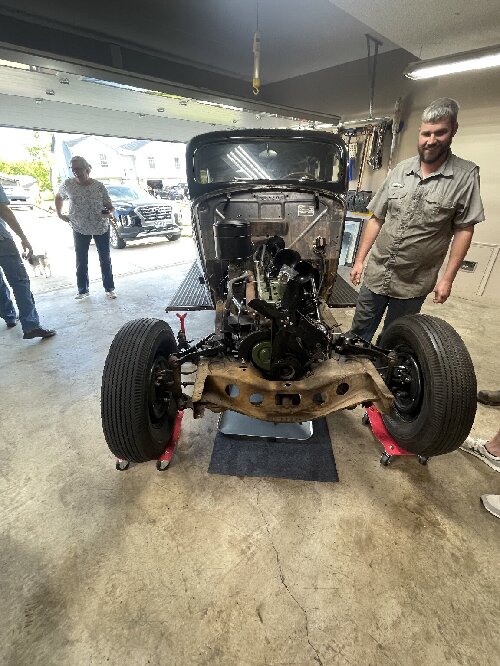 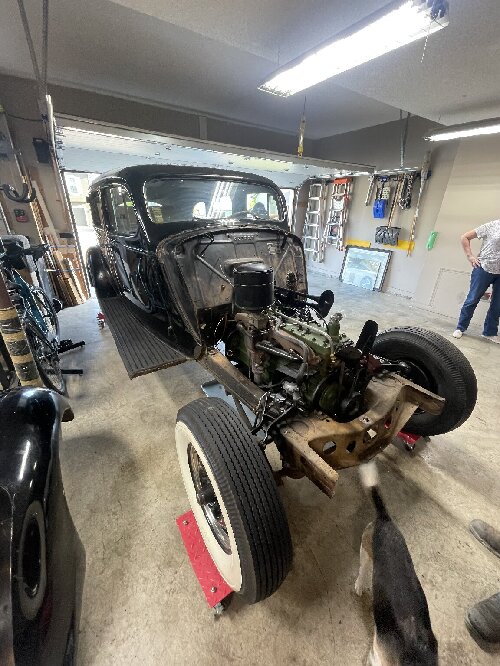 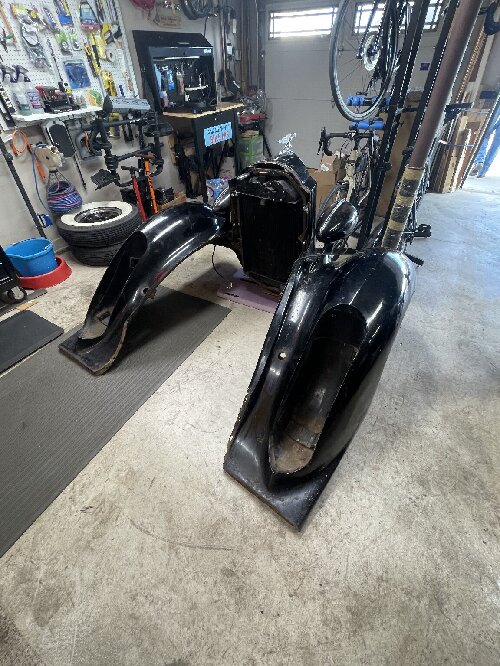 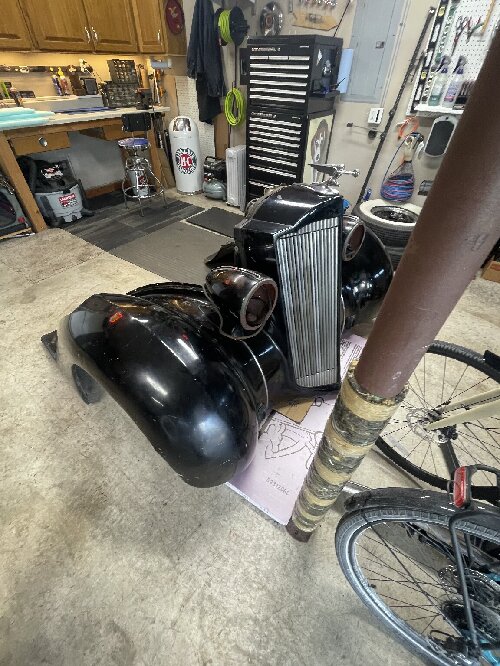 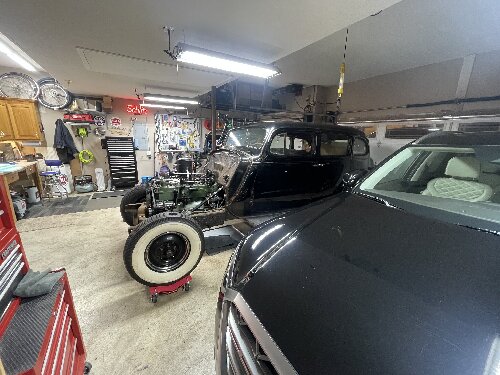
Posted on: 2024/5/3 21:34
|
|||
|
||||
|
Re: Don’s 1937 (120) 138CD Deluxe Touring Limo
|
||||
|---|---|---|---|---|
|
Home away from home
|
Well done Don! Interested to see some pictures of the front end of the block if you remove your fan. Want to see what is below the water pump.
Posted on: 2024/5/4 19:58
|
|||
|
||||
|
Re: Don’s 1937 (120) 138CD Deluxe Touring Limo
|
||||
|---|---|---|---|---|
|
Home away from home
|
The fan is off. I’ll take some pictures tomorrow. I pulled the radiator out of the shell so I can get it to a shop on Monday.
Then, I revisited the heater project. The wrinkle paint is awesome, but I wasn’t happy with the way one door turned out. About a quarter of one door didn’t wrinkle the same as the rest. So…stripped it back down and primed. I’ll try again with the wrinkle paint tomorrow. 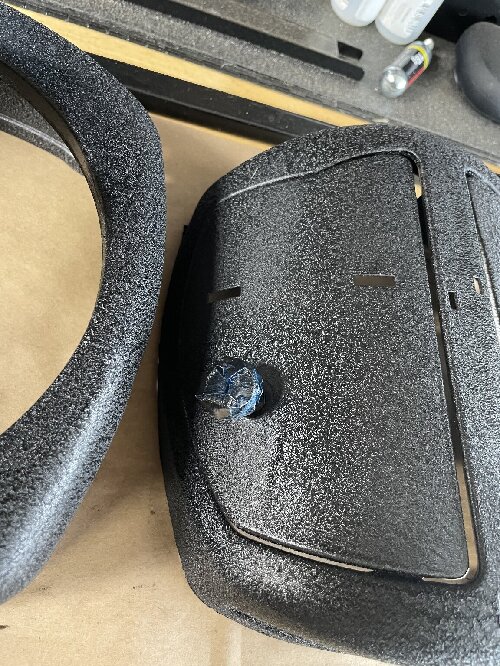  
Posted on: 2024/5/4 22:01
|
|||
|
||||
|
Re: Don’s 1937 (120) 138CD Deluxe Touring Limo
|
||||
|---|---|---|---|---|
|
Home away from home
|
Quote:
Here you go, Ben. 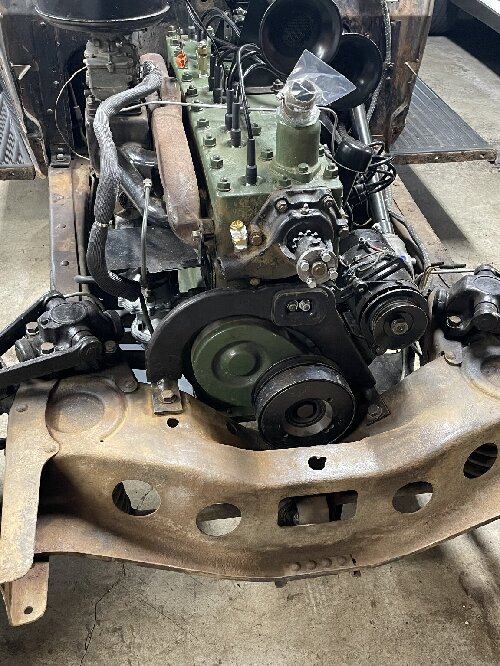 Question for the group…I’ve seen a lot of disagreement on this. I’m planning pull the water pump so I can inspect and clean the coolant distribution tube. I’m also planning to go ahead and replace the timing chain while I have easy access. I have some great videos from the old Classic Car Restoration show for a 1938 Packard. In that, he mentions using a very thin coat of silicone sealant on the gaskets. There are a LOT of options on sealants and I would love some guidance on what to use.
Posted on: 2024/5/5 13:49
|
|||
|
||||
|
Re: Don’s 1937 (120) 138CD Deluxe Touring Limo
|
||||
|---|---|---|---|---|
|
Home away from home
|
Thanks Don. Don’t know what the 2 bolts below the fan that are inset The block? I ask because I think that is where I have a leak but not sure?
Posted on: 2024/5/5 14:05
|
|||
|
||||
|
Re: Don’s 1937 (120) 138CD Deluxe Touring Limo
|
||||
|---|---|---|---|---|
|
Home away from home
|
Quote:
That is your front motor mount. If you look at the lower left bolt on the water pump, you will see why people say you will likely have to jack up the engine about a 1/2 inch to replace the water pump. That is because if the front motor mount (rubber) is worn out the engine will drop down and rest on that bolt. In my case, the bolt is where it should be because I have a new motor mount.
Posted on: 2024/5/5 14:53
|
|||
|
||||
|
Re: Don’s 1937 (120) 138CD Deluxe Touring Limo
|
||||
|---|---|---|---|---|
|
Home away from home
|
Okay, folks…i could use some help. I went ahead and pulled my water pump off so I could inspect and clean the coolant distribution tube. Here is what I have…
Clearly a lot of silicone had been used (back to my question of what gasket sealant should be used). In this case, it was a lot more than should be needed. This clearly at least one of the coolant leaks I have. I know the radiator does have one small leak. 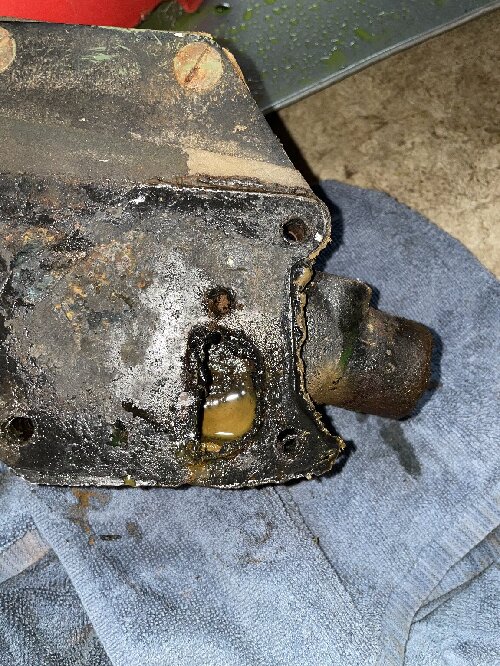 Now, from other posts, it sounds like the coolant distribution tube should slide out. Is that right? Take a look at the condition of what I found. I would sure like some guidance on next steps. I know that Allen did flush the system and all of the coolant that came out of the block was very clean. So that’s good. Note that the small hole above the tube on the block was full of crud, but everything else was very clean. The corresponding hole on the pump was full of silicone. 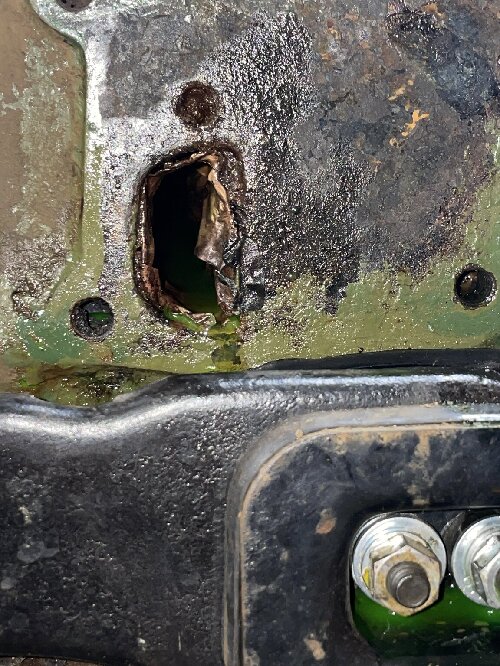
Posted on: 2024/5/5 15:00
|
|||
|
||||
|
Re: Don’s 1937 (120) 138CD Deluxe Touring Limo
|
||||
|---|---|---|---|---|
|
Home away from home
|
Okay…yet another question.
In the Classic Car Restoration series (Mark Lambert), he also showed how to check compression. Completely new to me, but decided to try it. Now, I bough a very inexpensive tester. Many of the reviews mentioned that it seems to read low and many comments were that it seems to read about 75 psi when other/better testers read 100psi. As such, I am not really concerned about the actual numbers, but the amount of variation does have me concerned. Looking for guidance…. In the video, Mark states that Packard allowed up to 20% variance between cylinders. As you can below, No 5, 6, and 7 vary significantly more than that. Here are the numbers which were repeatable. No 1 - 75 psi No 2 - 65 psi No 3 - 68 psi No 4 - 65 psi No 5 - 55 psi No 6 - 52 psi No 7 - 52 psi No 8 - 75 psi
Posted on: 2024/5/5 18:03
|
|||
|
||||
|
Re: Don’s 1937 (120) 138CD Deluxe Touring Limo
|
||||
|---|---|---|---|---|
|
Home away from home
|
On the distribution tube: feel inside the opening, there is a hole in the inner wall of it, take a wire like a coat hanger and bend a tight hook in it, insert it in the hole and tug the tube out. It is tapered so as soon as it starts to slide it will come free and the rest of the travel is quite easy. Mine looked like yours, so it too should slide out fairly easily. Mine was empty for years with no frost plugs so was glued in with mouse house yet still came out fine.
I used Permatex (thinly!) as a sealant throughout the rebuild. Your compression results look like work needs to be done. You are getting a drop in compression due to either worn valves/seats, or worn rings/cylinders or likely both. A valve job is fairly straightforward on these anvil heads. I have heard a check on rings can be done by adding some oil (STP?) to the cylinder through the sparkplug hole to temporarily seal them. By doing a test again after the STP type additive it may show whether it is rings or valves. (If compression goes up, the rings are worn, if it is the same, it's the valves) You may be able to test the valve's seating by removing the sparkplugs and the valve covers, turn the motor over until both valves are closed, spray a penetrating oil at the valves through the sparkplug hole and look for leaks. May show up any bad seats. You and I know that an 87 year old engine would be best to have the engine rebuilt at some point. If the compression is showing wear, it would not be isolated to the combustion chamber. Con Rods, Mains, Oil Pump, Cam/bearings are also VERY likely in need of rework. It will never be cheaper than right now, and it does not get any easier as we get older either! Also, the parts to do it right will not be around for ever either. Makes going out touring more fun when you are not worried about the engine. It's all very well to have a beautiful kitchen in your house, but if the foundation's cracked and the roof is leaking...? Bob J.
Posted on: 2024/5/5 18:38
|
|||
|
||||








